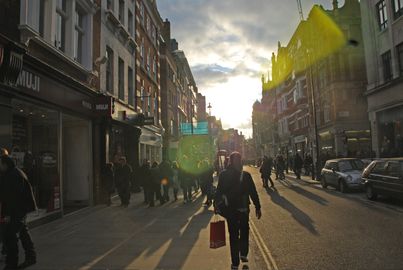

The name of this street is a clue to Covent Garden's ancient past as farmland outside the City of London. An acre is not only a measurement today - equal to 1/640 of a square mile – but in the Middle Ages it meant a field which could be ploughed in a single day with oxen. “Long Acre” must have been easy to plough – because it was longer than other acres. Looking at the fashion shops here today – Marks and Spencers, Zara, H&M, Gap – it's hard to believe that this was once a large medieval field!
And London's most famous shop for travellers, Stanfords, is at 10-12 Long Acre. Here you can find every kind of map imaginable – topographical, political, historic, and even 3D. You can even buy maps of USSR made by American spy satellites of the Cold War era – with details of secret military installations, and information useful to bomber pilots!
It's appropriate that we step out of the pedestrianised area of Covent Garden here, and back into the world of modern transport – because Long Acre was traditionally the home of carriage-making. In the 17th century the famous London diarist Samuel Pepys mentions buying a carriage on Long Acre, for 53 pounds. Of course, the carriage-makers were the first to move into developing that new-fangled invention – the motor car. In the 20th century Mercedes, Daimler and Fiat all had showrooms here. As far as we know, the earliest version of the modern bicycle – the 'hobby horse' – was first made here by enterprising wheelwrights keen to serve the smart young gentlemen of the 19th century.